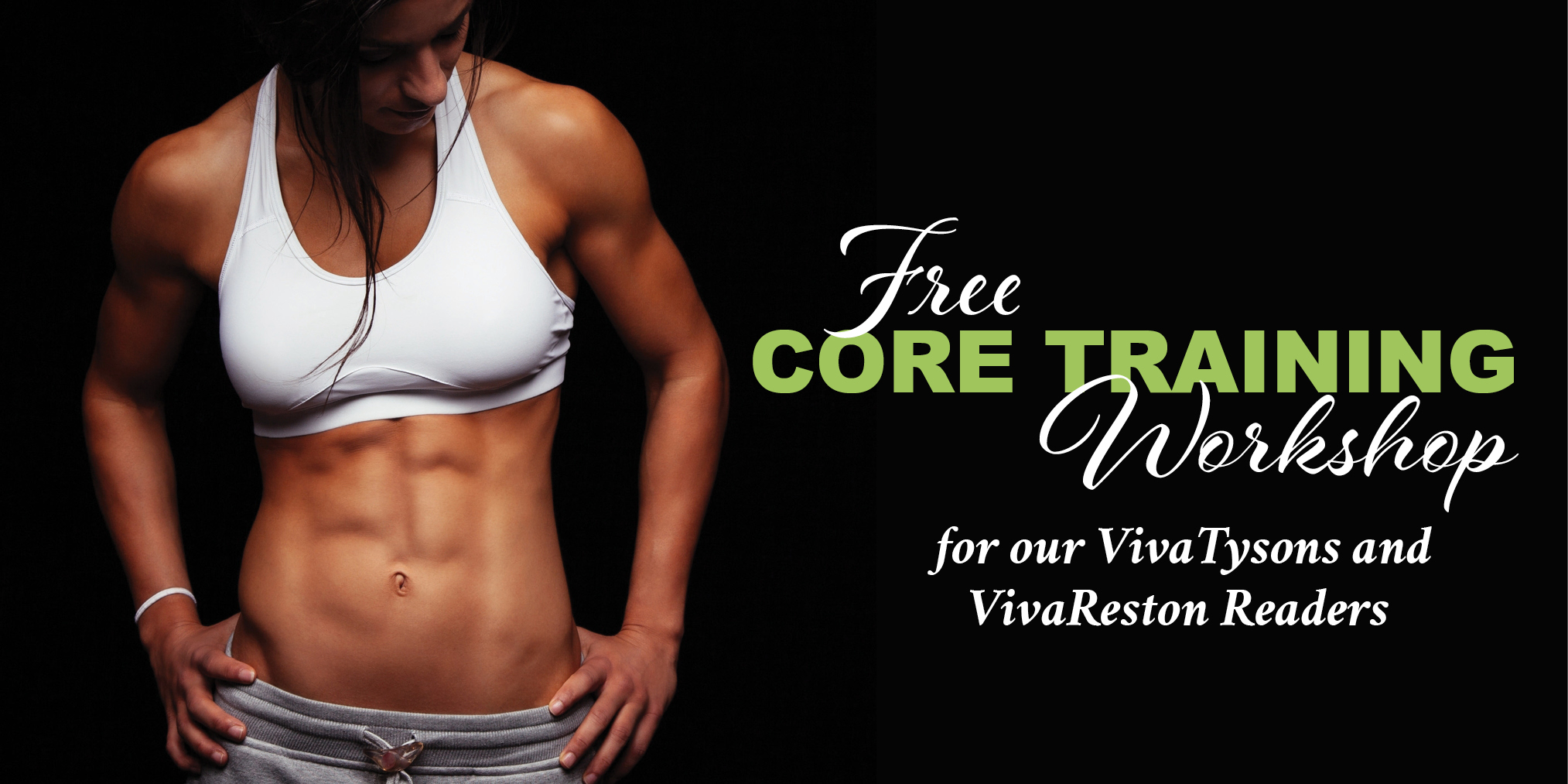for our VivaTysons and VivaReston Readers
We have received many questions about training the “core.” Doctors want us to keep our core strong to help protect our lower back and alleviate lower back pain. Coaches want our core strong so we can be more resilient to injury and enhance our athletic performance. Gym goers train their core to feel healthy and fit and for some to strive for the elusive “washboard abs.” Yet while the “core” is one of the most popular terms in fitness and athletic conditioning, many people do not have a clear understanding of what “core” means and how we train it most effectively.
Most people equate the core to abdominal muscles, especially the rectus abdominis which is close to the surface of our body and that gives those with very little body fat their “six-pack” look. While the abdominals are a component of our core musculature, our “abs” and our “core” are far from one-in-the-same. Our core musculature also includes many other internal muscles closer to our spine and pelvis, in addition to posterior muscles of our lower, mid, and upper back, our pelvic floor muscles, and many muscles surrounding our hips. However, while some may define the core as our entire mid-section, trunk, or torso (excluding the legs, arms and head), the human body is meant to function as a unit and this unit also includes nerves, ligaments, tendons, and fascia. Fascia is a like our natural Spiderman suit; a vast web of connective tissue that is interwoven and wrapped around our muscles, joints, and internal organs, often with strands or sheaths that are integrated or connected from toe to head.
“Core” classes at your local health club and popular “core” workout videos are dominated by more isolative instead of entire-body integrative exercises, the vast majority of which are performed on the ground in a supine (on our back) or prone (facing down) position instead of standing on our feet. Doing things like sit-ups, crunches, scissors, and cycles certainly make us feel the burn in our abs, and the variety of planking variations do enable us to involve the entire body in a more integrated fashion, but these are incomplete. The fundamental movement that we perform in activities of daily living and in athletics (walking, running, bending, squatting, rotating, pushing, pulling, reaching, etc.) are accomplished with not only muscle contractions but with the integrated, coordinated involvement of our nervous system and connective tissue, and do not occur laying down on our backs, or flexing our spine (like with crunches), or even in planking positions. The most beneficial core exercises are done on our feet and include movements that involve and place demand on the entire body from toe to head and treat the body as an entire unit with all of our tissue working together as a coordinated “symphony,” not with specific muscles “playing solos.”
The One To One Fitness center will hold complimentary workshops for all Viva Tysons and Viva Reston members who would like to learn an entire spectrum of core conditioning exercises. If you would like to attend please contact us through our web site using URL: 1to1fitness.com/try-us-out/ and indicate in the message section that you would like to attend the Viva Tysons Core Conditioning workshop. Simple observation is welcome, but participation is encouraged. If you would like to participate bring exercise clothing. It will not be a strenuous workout so you will not need to shower if you will be going back to work after the workshop






